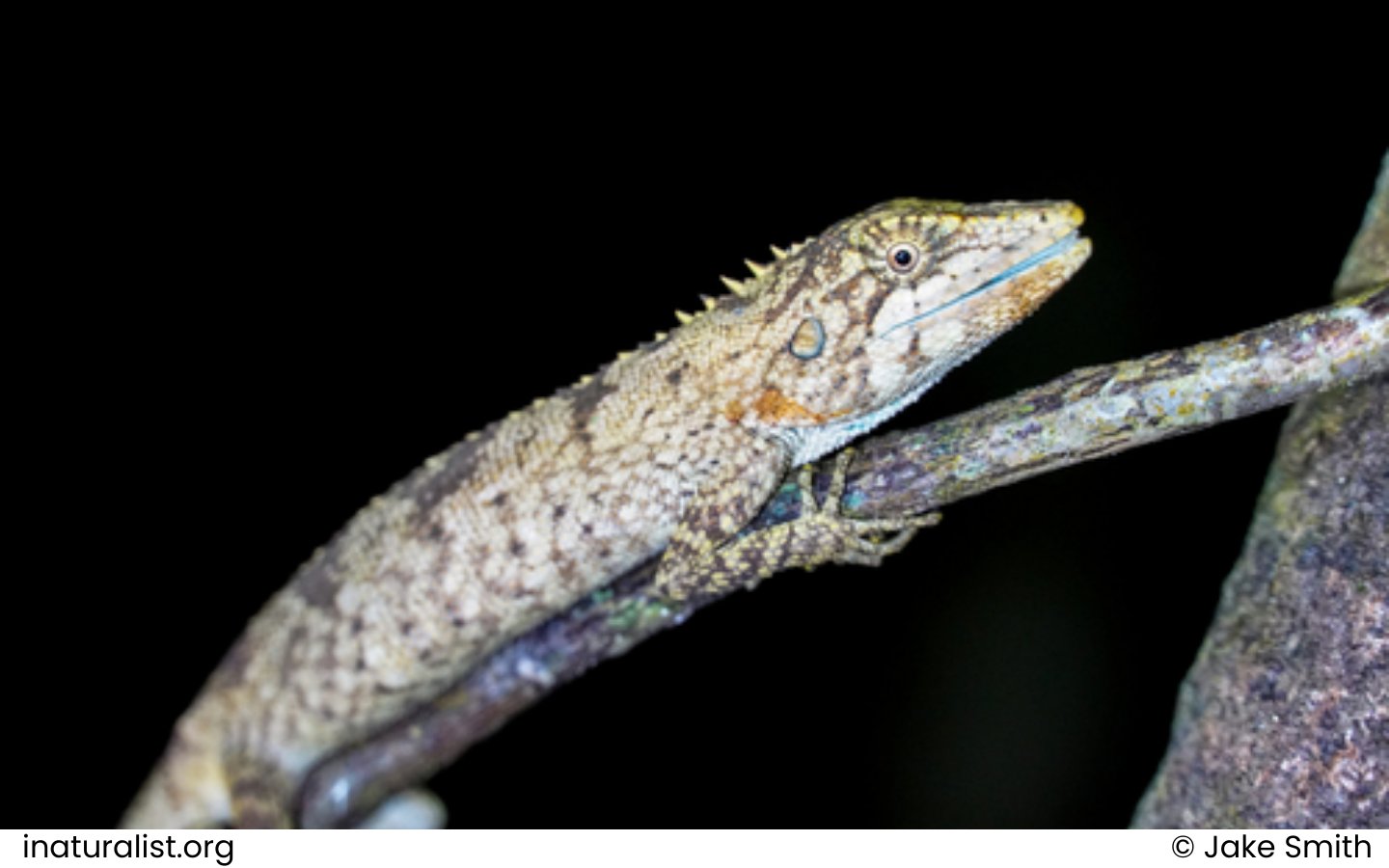
Science name: Pseudocalotes ziegleri – Hallermann, Truong, Orlov & Ananjeva, 2010
Taxonomic: Animalia>> Chordata>> Reptilia>> Squamata >> Agamidae >> ziegleri
Species status: Endemic ; IUCN status: LC (Least Concern)
Description:
Physical Characteristics:
Scales: Pseudocalotes ziegleri is distinguished by having 57-64 scales around midbody, fewer than closely related species such as Pseudocalotes brevipes and P. microlepis.
Supralabials: The species has 7-8 supralabials, occasionally 9, and a larger tympanum relative to its orbit (ratio of 1.84 compared to 2.23 in P. brevipes).
Subdigital Lamellae: It possesses subdigital scales on the third toe that are triangular and pointed, which is a distinguishing feature from other species in the genus.
Body Shape: The species has rhomboidal and smooth lateral scales, distinguishing it from P. brevipes with triangular, keeled scales.
Coloration and Appearance:
The body is generally grey or brown, with no distinct spots on the elbows, and the scales are uniform in color. The tympanum is relatively large, and the dorsal coloration may include pale greyish-brown edging on the posterior scales.
Distribution and habitat:
Elevation:
The holotype of Pseudocalotes ziegleri was collected at an elevation of approximately 1,200 meters above sea level in the Nuoc Ka forest near Mang Canh, in Kon Plong District, Kon Tum Province, Central Vietnam. The species has also been recorded in Lam Dong Province, further south, although its full range remains uncertain.
Area:
The known range of Pseudocalotes ziegleri is currently limited to central Vietnam, where it is typically found in montane forests. The specific forest habitats include both secondary forests and open areas at high elevations, with a preference for moist, forested environments.
Habitat:
The species thrives in subtropical/tropical montane forests, often at higher elevations. It is an arboreal species, spending most of its time in trees. Its habitat is characterized by dense vegetation and cool, moist conditions that are typical of montane environments.
Behaviour and ecology:
Lifestyle:
Pseudocalotes ziegleri is diurnal and arboreal, living primarily in the trees of its montane forest habitat. It moves slowly and relies on its cryptic coloration to avoid predators. This species is likely insectivorous, feeding on a variety of small invertebrates found in the forest canopy.
Reproduction:
The species is assumed to be oviparous, like other members of the genus, though specific details about its reproduction remain unrecorded.
Conservation and status:
IUCN Red List Category and Criteria:
Pseudocalotes ziegleri is listed as Data Deficient due to the lack of comprehensive data regarding its population size, distribution, and potential threats. The last assessment was in 2017, and the species remains under-studied.
Population Trend:
There is no current information about the population trend of this species. Its range is limited, and its population size remains unknown.
Threats:
The primary threat to Pseudocalotes ziegleri is likely habitat loss, particularly due to deforestation and habitat fragmentation in its montane forest environment. However, specific threats have not yet been thoroughly studied or documented.
Conservation Actions:
There are no specific conservation actions in place for Pseudocalotes ziegleri at present. However, the species may benefit from general forest conservation efforts in Vietnam, especially in the protected areas where it is found. Further research is needed to assess its population, distribution, and ecology, which will be essential for future conservation planning.
Etymology
The species is named after Dr. Thomas Ziegler (Cologne Zoo), in recognition of his extensive research and contributions to Vietnamese herpetology. Dr. Ziegler’s work has been instrumental in advancing the understanding of Vietnam’s rich biodiversity, especially its reptiles and amphibians.
Crocodile Trail – The Best Birding Trail in Cat Tien National Park
If you’re a birder or nature photographer planning a trip to Vietnam, few places offer [...]
Cong Troi Trail – Top 1 Dalat Plateau Birding Trail Experience
If you’re a birder or nature photographer planning a trip to Vietnam’s Central Highlands, the [...]
How to Identify the Greater Sand Plover, Tibetan Sand Plover and Siberian Sand Plover
Identification Differences within the Sand Plover Complex: The sand plover group, which was traditionally divided [...]
Highlights of Cat Tien National Park Reptiles and Amphibian Endemics
Spanning over 71,350 hectares of tropical forests, grasslands, and wetlands, Cat Tien National Park is [...]
Highlights of Cat Tien National Park Mammals in a World Biosphere Reserve
In addition to reptiles and birds, Cat Tien National Park is also rich in mammals, [...]
Kontum Plateau Endemic and Highlight bird
Kontum Plateau Endemic And Highlight Bird species like Chestnut-eared Laughingthrush and top birding routes while [...]